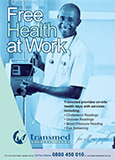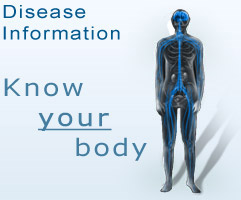Chronic Obstructive Pulmonary Disease
What is COPD?
Chronic obstructive pulmonary disease (COPD) is a condition that is characterised by a gradual decline in lung function. In COPD there is a chronic inflammation of the airways that causes obstruction or decline of the airflow into and out of the lungs. The two main conditions characteristic of COPD are chronic bronchitis and emphysema. You may have one or the other, but most patients have a combination of both.
Your lungs have two main parts: bronchial tubes (airways) and alveoli (air sacks). When you breathe in through your windpipe, the air moves through your bronchial tubes and into your alveoli. From the alveoli, oxygen goes into your blood while carbon dioxide moves out of your blood and is exhaled.
If you have chronic bronchitis, the lining in your bronchial tubes becomes red and full of mucus. The mucus then blocks your tubes and this makes it hard to breathe.
If you have emphysema, your alveoli are irritated, they become hard and can't hold enough air. The unbendable aveoli makes it hard for you to get oxygen into and carbon dioxide out of your blood.
Symptoms of COPD
- Chronic cough: It is often the first symptom of COPD to develop and unfortunately it is often discounted as smoker's cough or the effect of cold weather.
- Sputum production: People with COPD often produce sputum (phlegm) after coughing.
- Shortness of breath (dyspnea): In the early stages, COPD sufferers may experience breathlessness only during strenuous activity like climbing stairs or exercising and sometimes attribute this to age or being unfit. But gradually patients begin to feel shortness of breath even during simple activities, like walking across the room, and even while resting.
Causes of COPD
Smoking is the main cause of COPD and causes between 80% to 90% of cases. It is very important that people with COPD QUIT SMOKING so that the fast progression of the condition can be slowed down.
Some other risk factors could include occupational dusts and chemicals, second-hand smoke, indoor and outdoor air pollution, and a genetic condition known as alpha-1 antitrypsin deficiency, which occurs in only a small number of people.
By making the proper lifestyle changes, receiving the correct treatment and consistently taking your medication, you can increase your quality of life while living with COPD.
Complications of COPD
If you have COPD, you may be more likely to contract colds and flu. You might also have high pressure in the vessels which supply blood to your lungs. You should discuss with your doctor the necessity in having a flu and pneumonia shot every year. Rehabilitation and exercise programmes specifically for people who have COPD may also be helpful.
Spirometry
A spirometry test is important for the diagnosis of COPD. The purpose of this simple test is to measure the amount of air a person can breathe out and the amount of time taken to do so. A spirometer is a device used to measure how effectively, and how quickly, the lungs can be emptied.
Treatment of COPD
If you have COPD, the most important thing you can do is to quit smoking. This can stop or at the very least slow the damage to your lungs. Talk to your doctor about how to quit smoking. If you quit smoking soon, you have a better chance of living longer and being healthier.
Your doctor may also prescribe various medication (inhalers or tablets) to make you feel better and breathe easier. This medication could include antibiotics and some that you inhale (breathe in). You may need to take steroids and antibiotics if you get a respiratory infection.
Some people with more advanced COPD need to use oxygen. You inhale the oxygen through tubes placed in your nose or through a mask that covers your mouth and nose.
References
 TransmedBanner4.jpg)

